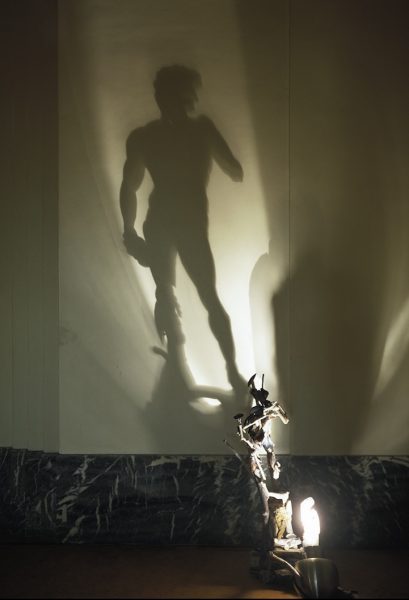

This manner of portrayal was common for old men, who in these prints have sagging bellies, crooked legs, and joints like those of marionettes.

One could say that the muscles are over-rendered: the bamboo cutter has exceptionally wrinkled limbs and facial features. This group emphasizes how printmakers depicted muscles. Four themes highlight this history: muscles, clothing, faces, and the relationship between the body and nature. This history of style and conceptions of the body is reflected in the prints presented here. Men shaved the tops of their heads and wore the remainder in a bun in the summertime, they would bare their skin, wearing only fundoshi, or loincloths. The practice of teeth blackening continued during the Edo period, when female courtesans also began putting wax into their hair to facilitate elaborate, stiff hairstyles. In Heian Japan, for instance, women blackened their teeth and shaved off their eyebrows. The history of the human body in Japan differs greatly from that in Europe and America.

Instead, they demonstrate their artists’ own concepts of anatomy and strong understanding of space. Drawn only with contour lines, but rendered as if in three dimensions, the figures in these prints seem to present the antithesis of anatomical correctness according to Western academic standards. This installation focuses on the distinctive characteristics of the human figure as depicted in Japanese prints from the Edo and early Meiji periods (between 17): crooked backs, sloping necks, contorted feet, twisted heads, sinewy arms, and potbellies.


 0 kommentar(er)
0 kommentar(er)
